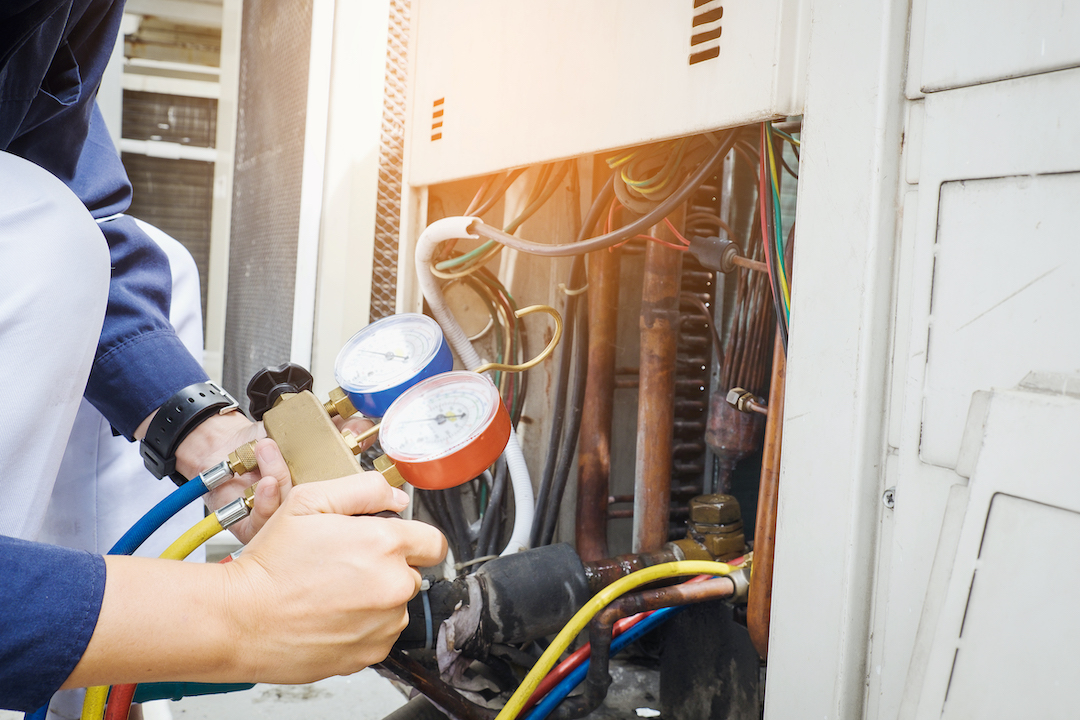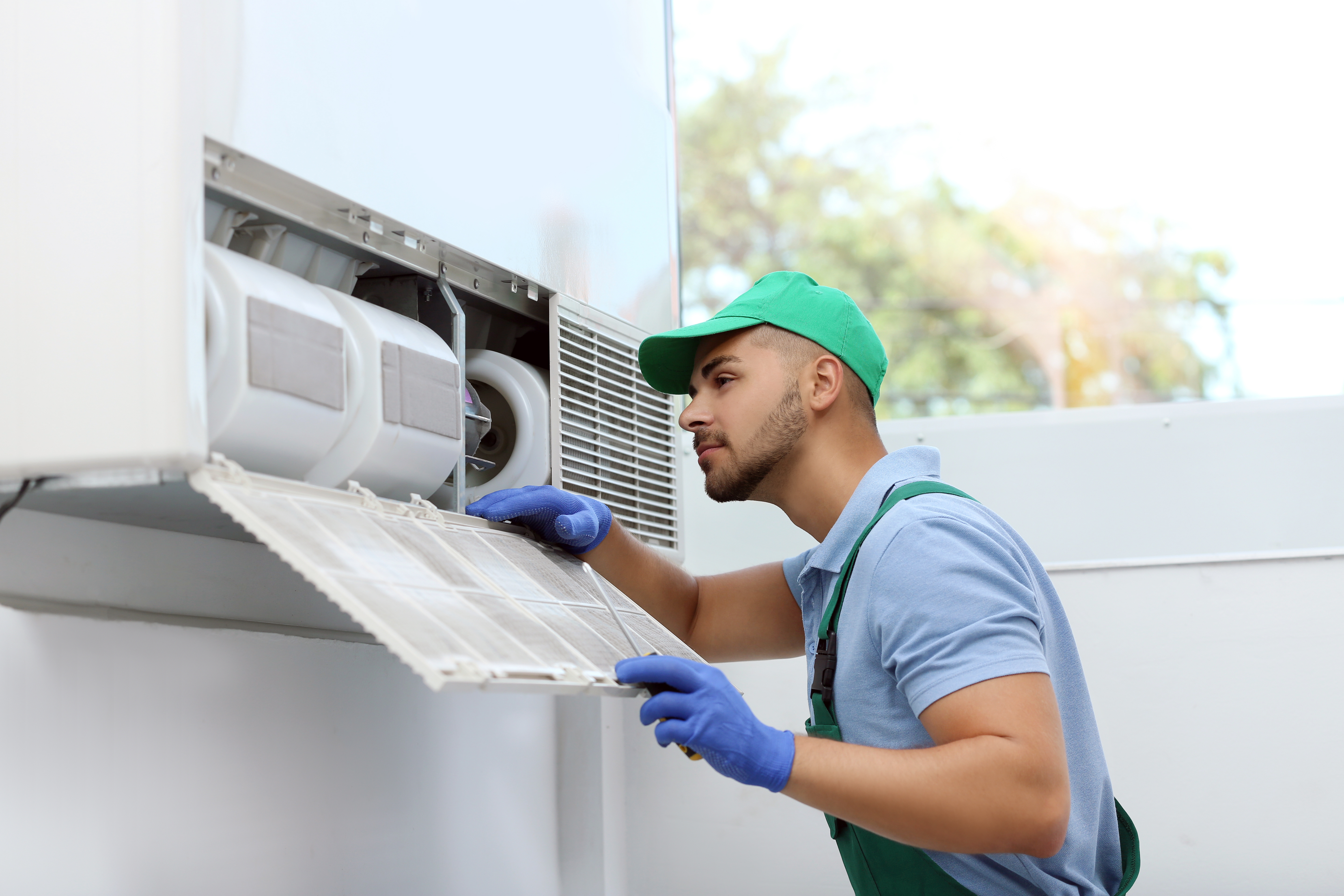10 Critical Things Before heat pump installation ooltewah tn
10 Critical Things Before heat pump installation ooltewah tn
Blog Article
Just How a Heat Pump and Furnace Job Together to Optimize Your Home's Home heating Performance
Understanding exactly how a heat pump and heater job together is important for homeowners seeking effective heating remedies. Each system has its toughness, offering a balanced method to home comfort. The warm pump succeeds in modest temperatures, while the heating system provides quick warmth throughout severe cold. This synergy not only minimizes energy expenses yet also enhances the life-span of both appliances. What elements influence this collaboration, and how can homeowners maximize their advantages?
Understanding Heat Pumps: Just How They Function
Lots of individuals might be unknown with their inner functions, heat pumps play an essential role in contemporary home heating systems. These devices run by moving warm from one location to one more, making use of the principles of thermodynamics. In cooler months, a heat pump extracts warmth from the outside air, ground, or water, and transfers it inside to warm up the space. On the other hand, during warmer months, it can turn around the procedure, acting as an air conditioner by eliminating warmth from inside to the outside.Heat pumps contain an evaporator, condenser, development, and compressor shutoff. The cooling agent within the system absorbs warm as it vaporizes at reduced temperature levels and pressures. The compressor after that raises the pressure and temperature of the cooling agent, permitting it to launch warm as it condenses. This efficient procedure can greatly decrease energy consumption contrasted to standard heating approaches, making warmth pumps a lasting option for environment control in homes.
The Role of Furnaces in Home Home Heating
Heating systems play an essential function in home heating by providing a trustworthy resource of heat throughout the chillier months. They run by creating warm through combustion or electric resistance, distributing it throughout the home via air ducts or glowing systems. The effectiveness of a furnace is typically determined by its Annual Fuel Usage Effectiveness (AFUE) ranking, which suggests exactly how effectively the unit converts fuel into heat.Furnaces can make use of various power sources, consisting of all-natural gas, electricity, gas, or oil, enabling property owners to choose the most ideal option for their demands. Unlike warmth pumps, which might have a hard time in severe cool, heaters maintain constant efficiency, ensuring that indoor temperatures remain comfy no matter of outside problems. In addition, modern heaters typically come furnished with advanced technology, such as variable-speed blowers and clever thermostats, boosting their effectiveness and responsiveness. This versatility makes heaters a critical component in all-encompassing home heating approaches.

Benefits of Utilizing Both Systems With Each Other
Incorporating the strengths of both heating systems and heatpump can cause a much more reliable and efficient home heating remedy. Making use of both systems permits property owners to make use of the warm pump's energy efficiency during milder temperatures while counting on the heating system for even more severe cold conditions. This twin approach can substantially minimize energy costs, as heatpump eat much less electrical power than standard heating methods when temperatures are moderate.Additionally, using both systems with each other can improve comfort degrees in the home. Warmth pumps can give constant, even home heating, while heating systems can rapidly elevate ambient temperature levels when needed. Moreover, the assimilation of both systems can expand the life expectancy of devices by minimizing damage on each unit, as they share the work. Inevitably, house owners can enjoy a well balanced, cost-efficient home heating remedy that adjusts effortlessly to differing weather problems, ensuring a cozy and inviting home throughout the cold weather.
Exactly How Warmth Pumps and Furnaces Complement Each Other
When home owners integrate warmth pumps and heaters, they create a complementary furnace that makes the most of performance and comfort. Warmth pumps run by transferring warmth from the outdoors air or ground, making them extremely reliable in modest climates. They stand out throughout milder temperature levels, giving cost-efficient heating. On the other hand, heating systems create warmth with burning or electric resistance, providing solid, prompt heat throughout extreme chilly conditions.The mix of these two systems permits vibrant adjustments based on temperature level variations. Throughout warmer months or milder winter season days, the warm pump can take the lead, saving energy and reducing expenses. As temperature levels decrease, the heater can perfectly engage, making certain regular warmth throughout the home. This synergy not only optimizes energy use but also enhances the lifespan of both systems, as each device runs within its ideal performance range. Together, they produce a well balanced environment that adapts to varying environment demands.
Optimizing Effectiveness: Tips for Homeowners
House owners can boost their home heating effectiveness through numerous functional strategies. Establishing a regular upkeep timetable, incorporating clever thermostat technology, and carrying out reliable insulation and securing remedies are vital steps. These steps not only improve comfort however likewise lower energy expenses.
Normal Maintenance Schedule
To guarantee optimal home heating effectiveness, establishing a regular maintenance schedule is essential for any kind of home. Property owners ought to focus on regular evaluations of both heatpump and heaters to determine peak efficiency. This includes changing air filters each to three months, as clogged filters can significantly lower efficiency. In addition, scheduling specialist maintenance at least yearly allows professionals to important site identify and deal with prospective issues before they rise. Property owners need to likewise cleanse the heatpump's exterior device to avoid particles accumulation that can impede airflow. By adhering to a routine upkeep schedule, homeowners not only boost their heating unit' efficiency however additionally prolong their lifespan, resulting in higher convenience and reduced power expenses throughout the chillier months.
Smart Thermostat Combination
Incorporating a smart thermostat into a home heater can substantially improve power efficiency, especially as it permits accurate control over temperature level settings. These gadgets can discover the property owner's schedule and choices, instantly adjusting the temperature level to enhance convenience while lessening energy use. For instance, they can reduce heating during times when the home is vacant, minimizing unneeded consumption. Several clever thermostats likewise offer real-time energy usage data, making it possible for house owners to make informed choices about their heating behaviors. Additionally, remote accessibility by means of smartphone applications allows users to readjust settings from anywhere, guaranteeing the home is cozy upon return. Overall, wise thermostat integration not just boosts comfort yet considerably adds to energy savings and efficiency.
Insulation and Securing Solutions
Smart thermostats play a vital duty in energy performance, however their performance can be significantly improved by correct insulation and sealing services. House owners must focus on insulating walls, attics, and floors to reduce warm loss. High-grade insulation materials, such as spray foam or fiberglass, can greatly enhance thermal resistance. Furthermore, securing spaces around home windows, air ducts, and doors protects against cool air seepage and warmth retreat. Weatherstripping and caulking are reliable approaches for addressing these leaks - furnace replacement. Normal examinations for air leakages, in addition to using blower door tests, can assist identify problem areas. By buying insulation and securing, home owners can optimize the efficiency of their heater, ultimately resulting in minimized power intake and lower utility bills
Common Misconceptions Regarding Warm Pumps and Furnaces
What mistaken beliefs surround heatpump and heaters? Several people incorrectly believe that warmth pumps are inefficient in colder environments. Actually, contemporary heat pumps are made to run efficiently also in low temperatures, giving trusted heating throughout winter months. An additional typical misconception is that heating systems are always extra effective than warmth pumps. Nevertheless, this depends on the details energy resources and effectiveness rankings of the systems concerned. Some might also assume that utilizing both systems simultaneously is unneeded, but actually, this combination can optimize heating efficiency, specifically during severe climate condition. In addition, individuals usually think that heatpump call for constant maintenance, when truthfully, they have similar maintenance needs to conventional heater. By exposing these misconceptions, homeowners can make more enlightened choices regarding their heating alternatives, ultimately resulting in enhanced convenience and energy efficiency in their homes.
Maintenance Factors To Consider for Combined Equipments

Frequently Asked Questions
Can Warmth Pumps Job Properly in Incredibly Cold Climates?
Warmth pumps can struggle in incredibly chilly environments due to decreased effectiveness and warmth removal limitations. Nevertheless, innovations in technology have resulted in designs made for far better performance in such conditions, improving their feasibility in rough environments.
How Long Do Heat Pumps and Furnaces Generally Last?
Heatpump usually last 15 to twenty years, while heating systems have a life expectancy of 15 to thirty years. Routine maintenance can prolong their longevity, making sure efficient operation and lowering the demand for early substitutes.

What Is the Ordinary Expense of Putting Up Both Solutions?
The average expense go to my site of mounting both a heatpump and a heater normally ranges between $5,000 to $10,000 - heat pump service. Aspects influencing this expense consist of system size, setup intricacy, and regional labor rates
Exist Tax Obligation Incentives for Utilizing Energy-Efficient Home Heating Solutions?
Several property owners make inquiries about tax motivations for energy-efficient furnace. Various government and state programs often use credit scores or rebates, encouraging the adoption of sustainable technologies to decrease power intake and advertise ecological responsibility.
How Do I Select the Right Dimension Heatpump and Heater?
Picking the right size heat pump and furnace involves calculating the home's square video footage, thinking about insulation high quality, and examining neighborhood environment. Consulting a specialist can assure ideal system performance and power performance based upon details needs. furnace replacement. Recognizing just how a warmth pump and heater work together is crucial for property owners looking for efficient heating remedies. In colder months, a warm pump extracts heat from the outdoors air, ground, or water, and transfers it inside to warm up the living room. When house owners integrate heat pumps and heating systems, they create a corresponding heating system that takes full advantage of efficiency and convenience. Warmth pumps operate by moving heat from the outdoors air or ground, making them highly reliable in moderate climates. Warmth pumps can have a hard time in very chilly climates due to minimized effectiveness and heat removal limitations
Report this page